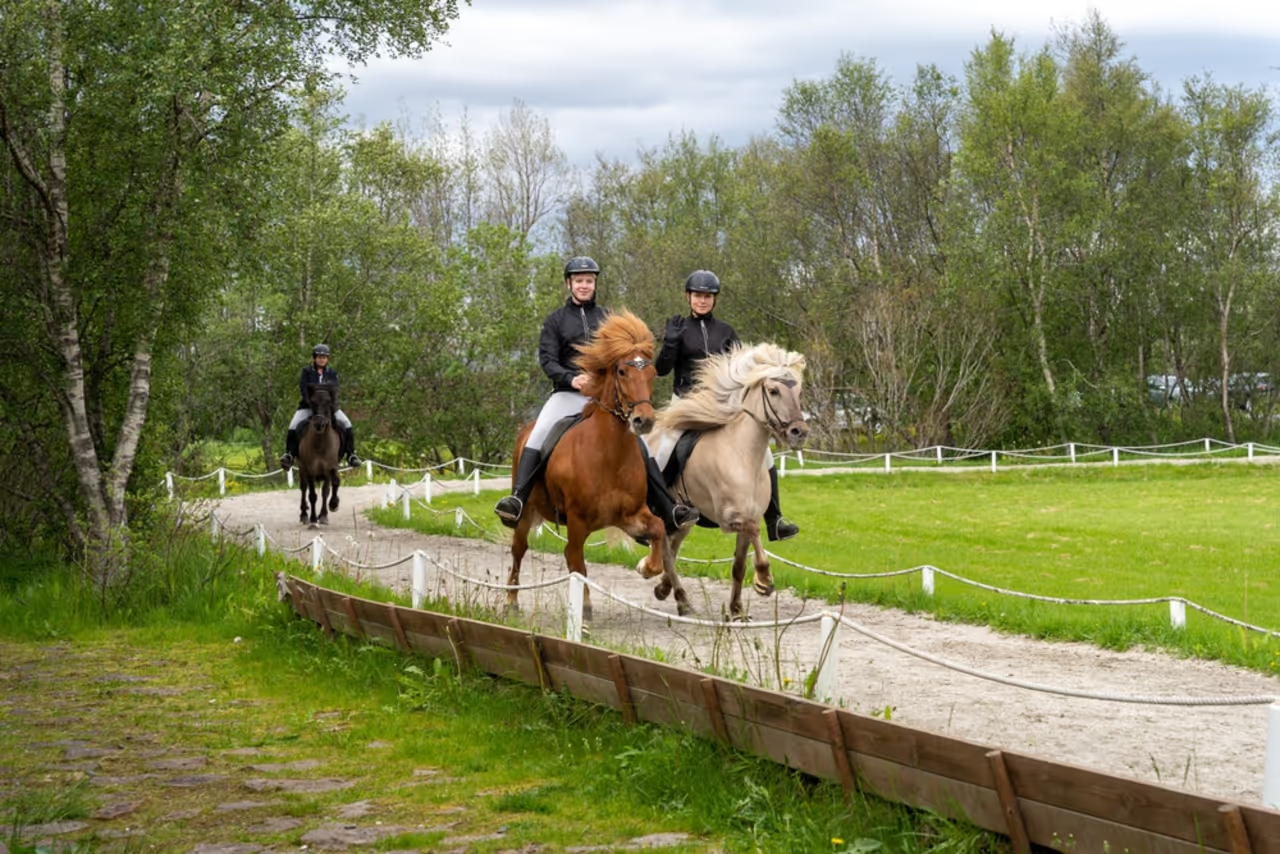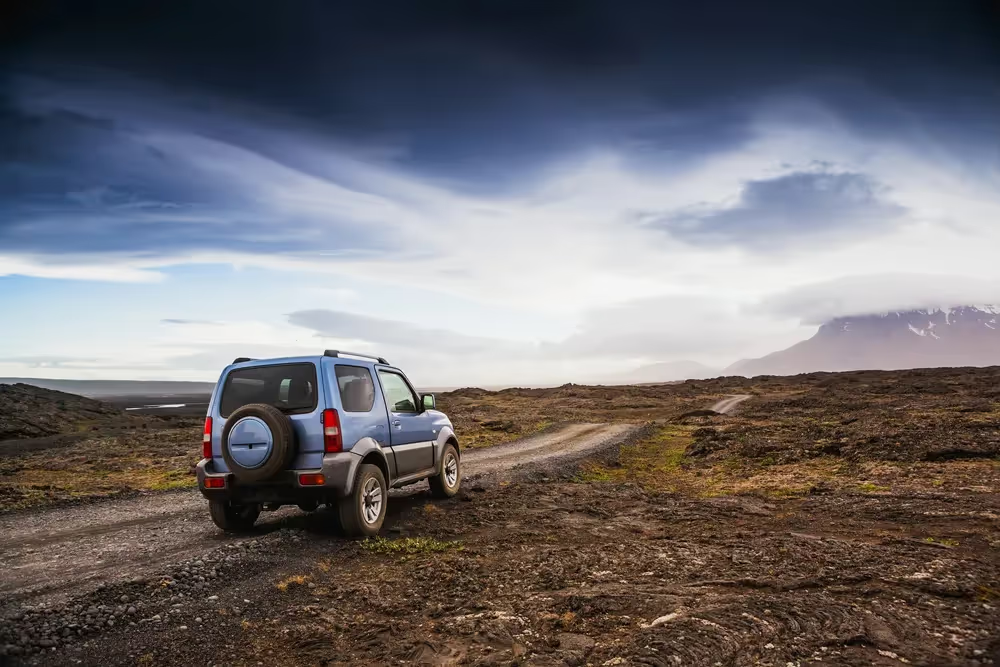The Golden Circle is Iceland's most popular tourist route, and for good reason. This 300-kilometer loop from Reykjavik takes you through volcanic landscapes, geothermal areas, and powerful waterfalls.
The route is especially good for families because the distances are manageable, the attractions are easy to access, and there's enough variety to keep children engaged throughout the day.
1. Thingvellir National Park: Walking Between Continents

Thingvellir National Park is where your Golden Circle journey typically begins. This UNESCO World Heritage Site sits in a rift valley where the North American and Eurasian tectonic plates are pulling apart at a rate of about 2 centimeters per year.
The park covers 237 square kilometers, but the main family-friendly area is concentrated around the Almannagjá gorge. The walk from the main parking area (P1) down into the rift valley takes about 10 minutes on a well-maintained path with wooden walkways. Children find it fascinating to stand between two continents, and the visual effect of the massive rock walls on either side makes the geological concept easy to understand.
The Öxarárfoss waterfall is a short walk from the main path and provides a good spot for photos. The water is crystal clear, and on calm days, you can see straight to the rocky bottom of the streams. The park has several walking trails ranging from 20 minutes to 2 hours, so you can adjust based on your children's energy levels and interest.
The visitor center has clean bathrooms, exhibits about the park's history, and a café. Iceland's parliament, the Alþingi, was established here in 930 AD, making it one of the oldest parliaments in the world. While young children might not grasp the historical significance, older kids often find it interesting to learn about Viking-age democracy.
Many families choose to join a Golden Circle tour that includes all three main stops with transportation and a guide who can explain the geology and history in an engaging way.
2. Geysir Geothermal Area: Nature's Water Show
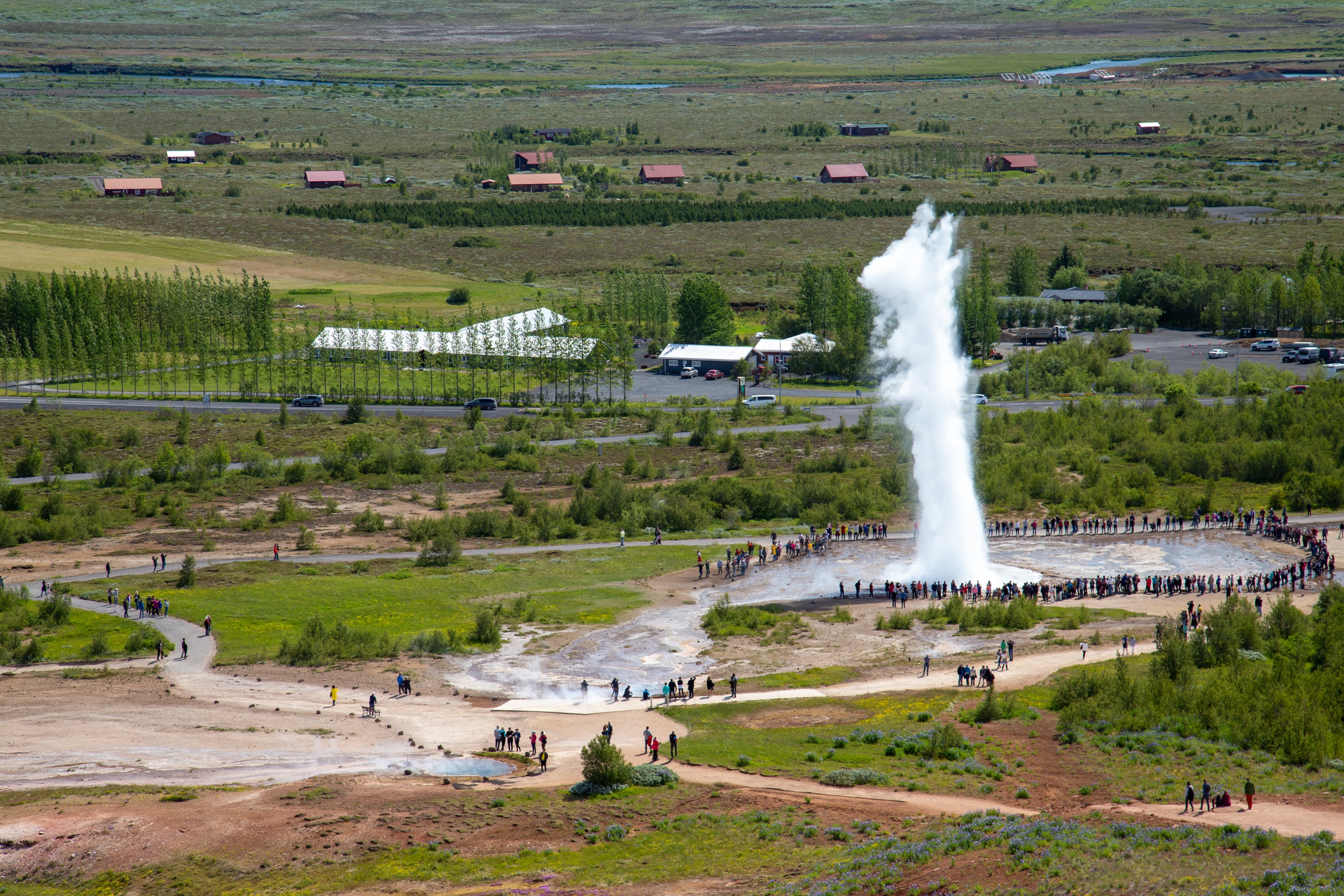
About 50 kilometers from Thingvellir, you'll reach the Geysir geothermal area in the Haukadalur valley. This is where the word "geyser" originated, named after the Great Geysir which was once the most powerful geyser in Iceland but is now mostly dormant.
The star attraction here is Strokkur, which erupts every 5-10 minutes, shooting water 20-40 meters into the air. The eruption lasts only a few seconds, but it happens frequently enough that you won't have to wait long. Children are captivated by the way the water dome forms just before it explodes upward. The trick is to have your camera ready because the eruption is quick.
The area is relatively small and takes about 45 minutes to explore. Boardwalks connect the various hot springs, fumaroles, and mud pots, keeping visitors safe from the boiling water. The ground around the geysers is deposited with silica and minerals that create colorful patterns of white, yellow, and orange. Steam rises constantly from multiple vents, and you can feel the heat radiating from the earth.
Safety is important here. The water temperature in these springs ranges from 80 to 100 degrees Celsius. Hold young children's hands and stay on the marked paths. The boardwalks can be slippery when wet, especially in winter when ice forms on the edges.
The Geysir Center across the parking area has a restaurant, gift shop, and bathrooms. The restaurant serves traditional Icelandic lamb soup, sandwiches, and hot dogs. It's a good place to warm up in winter or grab a quick lunch.
3. Gullfoss Waterfall: The Golden Falls
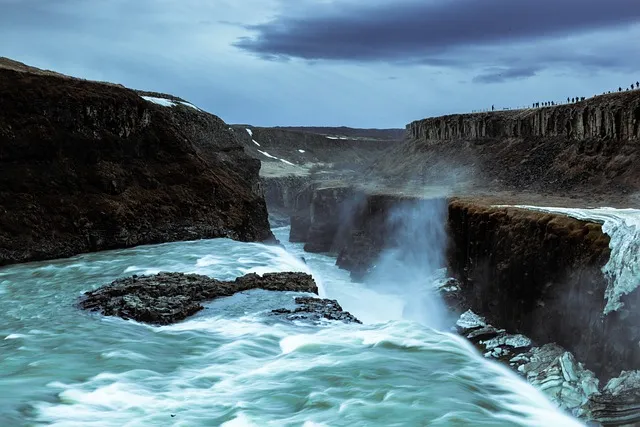
Ten kilometers from Geysir, Gullfoss waterfall crashes down in two stages, dropping a total of 32 meters into a narrow canyon. The Hvítá river carries runoff from Iceland's second-largest glacier, Langjökull, and the volume of water is impressive, especially during summer when glacial melt is at its peak.
The waterfall gets its name, which means "Golden Falls," from the golden hue the water takes on in sunlight. On bright days, rainbows form in the mist. The spray can reach quite far from the falls, so waterproof jackets are recommended.
There are two main viewing areas. The upper path is paved and accessible with strollers, leading to viewpoints that look down on the falls from above. This path is about 200 meters from the parking area and is the best option for families with very young children or limited mobility.
The lower path has stairs and gets closer to the water. You can feel the ground vibrate from the force of the water, and the roar is loud enough that you need to speak up to be heard. This path can be slippery and icy in winter, so it requires more caution with children.
The power of Gullfoss is best understood in person. About 140 cubic meters of water flow over the falls every second on average, and in summer floods, this can increase to 2,000 cubic meters per second. The canyon walls tower above you, and the spray creates a misty atmosphere that feels primordial.
The visitor center has bathrooms, a café, and a gift shop. The café serves hot soup, coffee, and light meals. There's also a small museum with information about Sigríður Tómasdóttir, an Icelandic woman who fought to protect Gullfoss from being turned into a hydroelectric power station in the early 1900s.
4. Kerið Crater: A Volcanic Wonder

About 15 kilometers north of Selfoss, Kerið is a volcanic crater lake that formed about 6,500 years ago. The crater is 55 meters deep, 170 meters wide, and 270 meters long. The water at the bottom is a striking blue-green color that contrasts beautifully with the red volcanic rock of the crater walls.
There's a small entrance fee of about 400-500 ISK per person, which goes toward maintaining the paths and facilities. The walk around the rim takes about 15 minutes and offers changing perspectives of the crater. You can also walk down a steep path to the water's edge, though this requires good balance and isn't recommended for very young children.
The colors of Kerið change with the light and season. In summer, the surrounding vegetation is green, and wildflowers bloom on the crater slopes. In winter, snow covers the rim and sometimes ice forms on the lake surface. The red and black volcanic rock is rich in iron, which gives it the distinctive rust color.
Kerið is less crowded than the main Golden Circle sites, making it a peaceful stop. There are no facilities here beyond a parking area and ticket booth, so plan accordingly.
5. Friðheimar Tomato Farm: An Unusual Lunch Stop
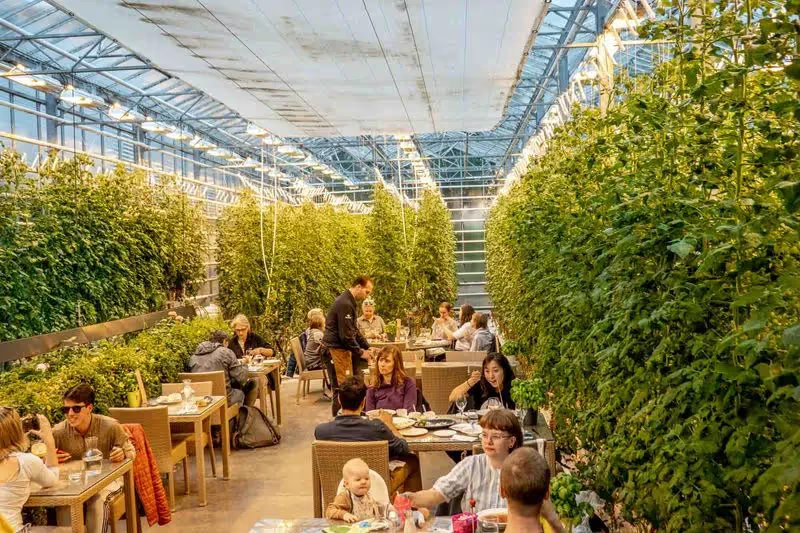
Friðheimar is a working greenhouse that grows tomatoes year-round using geothermal energy. The restaurant is located inside one of the greenhouses, surrounded by tomato plants growing up to the ceiling. It's an unexpected and memorable lunch experience.
The menu focuses entirely on tomatoes. The tomato soup served with fresh bread is their signature dish, but they also offer pasta, pizza, and various tomato-based dishes. Everything is made with tomatoes grown on-site. The restaurant takes reservations, which are recommended during peak summer months.
Children enjoy seeing how the tomatoes grow in this unlikely environment. Iceland's cold climate seems wrong for tomato farming, but geothermal heat and artificial lighting allow year-round production. The bees that pollinate the plants live in hives inside the greenhouse, and you can sometimes see them working among the flowers.
Friðheimar also has Icelandic horses on the property, and they offer a horse show at scheduled times during the day. The show demonstrates the unique gaits of Icelandic horses and includes information about their history and characteristics.
6. Secret Lagoon: A Geothermal Swimming Experience

The Secret Lagoon in the village of Flúðir is Iceland's oldest swimming pool, built in 1891. Unlike the famous Blue Lagoon, this is a more low-key experience with fewer crowds and lower prices.
The water maintains a comfortable temperature between 38-40 degrees Celsius year-round. The pool is fed by natural hot springs, and a small geyser erupts every few minutes near the edge of the pool. Steam rises from the water, and in winter, the contrast between the hot water and cold air creates a magical atmosphere.
The lagoon is large enough that it doesn't feel crowded even when busy. There's a walking path around the pool where you can see the hot springs that feed into it. Changing facilities, showers, and lockers are available in the modern building at the entrance.
Children can swim and play in the water, though supervision is necessary as the depth varies. The temperature is comfortable but not too hot, making it suitable for extended soaking. Many families book a Golden Circle and Secret Lagoon tour to combine the sightseeing with this relaxing experience.
